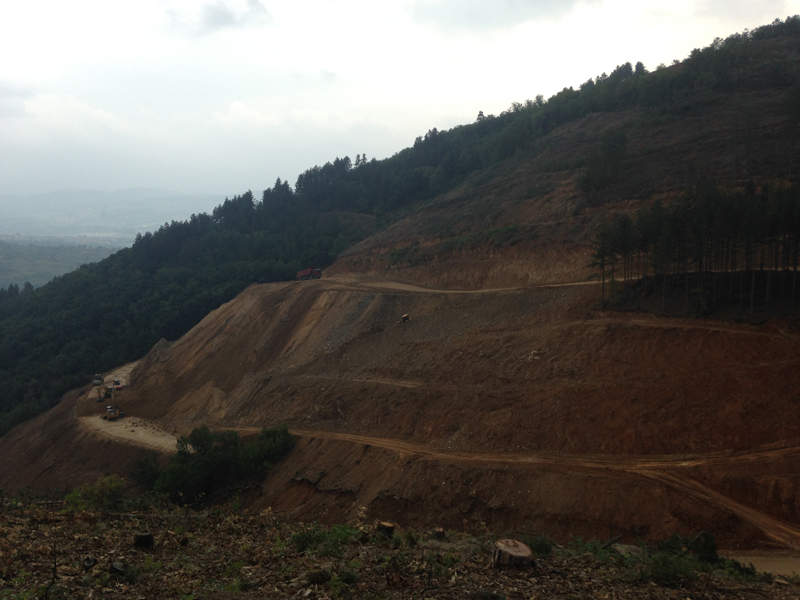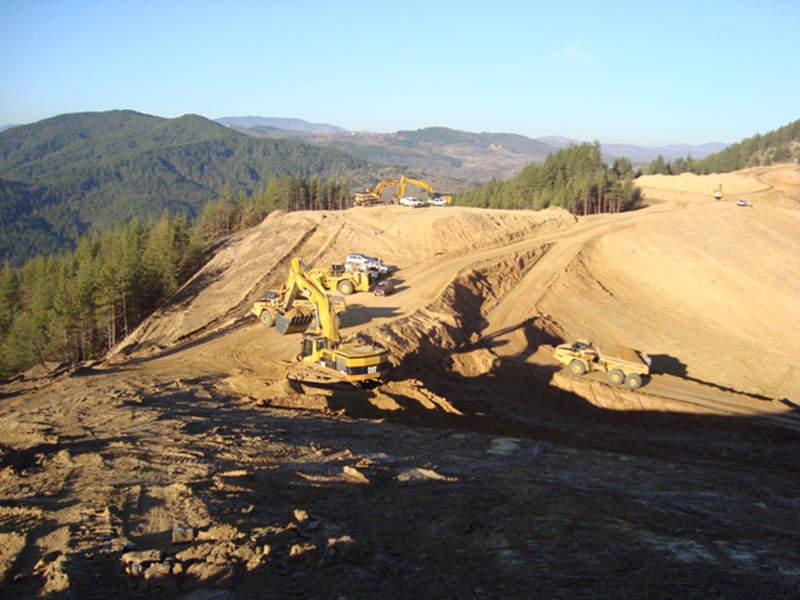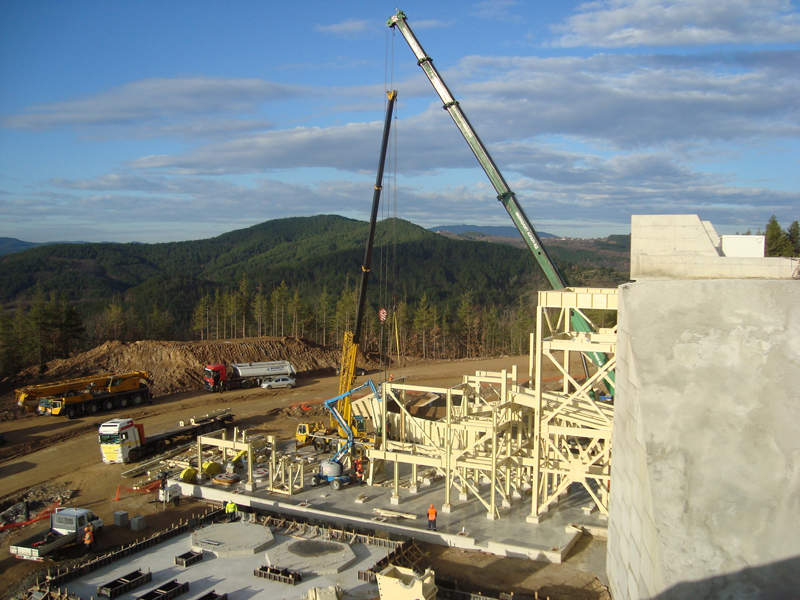The Krumovgrad gold project is located at Ada Tepe, approximately 3km south of Krumovgrad in south-eastern Bulgaria. Dundee Precious Metals (DPM) is developing the open-pit gold project.
DPM’s indirect subsidiary Balkan Mineral & Mining AD (BMM) secured the licence for the gold project covering 130km² in June 2000. The licence area was reduced to 100km² in accordance with the Underground Resources Act (1999).
The Bulgarian Council of Ministers (CoM) approved the development of the Krumovgrad gold project in February 2011 and granted a 30-year concession. The final construction permit for the project was granted in August 2016.
Construction of the project began in the fourth quarter of 2016 and first gold was produced in March 2019. The project is expected to have a mine life of eight years.
The mine is expected to produce approximately 3,000oz of gold and an average of 100,000oz of gold a year during the first five years. It is expected to process 775,000t of ore a year to produce 85,700oz of gold and 38,700oz of silver.
Krumovgrad gold project location, geology and mineralisation
The region where Krumovgrad project lies is an integral part of the Eastern Rhodopes Massif, which hosts the eastern portion of a large metamorphic terrain. The massif is associated with late Cretaceous–Miocene extension, which exposed the underlying lower crust rocks.
“The mine is expected to produce approximately 3,000oz of gold and an average of 100,000oz of gold a year during the first five years.”
Gold and silver mineralisation in the project area is mostly identified within the Shavar formation. Sedimentary rocks of the formation created discontinuous units containing sandstone, siltstone, and marl to marl-argillite and capping tectonic breccia.
The Ada Tepe deposit is the main deposit of the Krumovgrad project and is classified as a high-level epithermal gold-silver deposit.
Krumovgrad gold project reserves
The Ada Tepe deposit is estimated to contain approximately 6.2Mt of mineral reserves that are compliant with the Canadian Institute of Mining, Metallurgy, and Petroleum (CIM). It is estimated to contain 807,000oz of gold grading 4.04g/t Au.
Mining and processing at Krumovgrad
Open-pit method of mining, using drilling and blasting followed by loading by hydraulic excavators and haul trucks, is proposed for the Krumovgrad project.
Main mining equipment used at the mine includes a 23.7m³ backhoe excavator and 40t off-highway haul trucks.
Conventional processing methods, including crushing, grinding, and flotation processing will be employed for extracting gold at the Krumovgrad project. The processing plant is anticipated to treat up to 840,000 tonnes per annum (tpa) of ore over its mine life.
Run-of-mine ore will be reclaimed by a front-end loader and fed to the feed bin, and then forwarded to a jaw crusher to develop a P100 product of 200mm and P80 product of 125mm. The crushed material will be conveyed to the grinding circuit feed conveyor, through two apron feeders.
The grinding circuit will comprise a single-stage open-circuit semi-autogenous grinding (SAG) mill with pebble crushing and a tertiary grinding circuit. Overflow from the grinding circuit will gravitate as feed to the flotation circuit, at the required grind size P80 of 30 microns.
Concentrate from the rougher/scavenger flotation will be re-grinded in the tertiary grinding circuit to a P80 size of 15μm, and cleaned to produce the final concentrate.
The concentrate will be further thickened and dewatered in a pressure filter. The resultant product will be packed in sealed containers and shipped.
Construction of Krumovgrad gold project
Dundee Precious Metals commenced the main steel structural erection works of the processing plant in December 2017.
Earthworks for the integrated mine waste facility were completed in the first half of 2018, along with mechanical, structural, electrical and instrumentation works, and mine pre-stripping works.
Hot commissioning of the project was achieved in January 2019.
Financing
The capital cost of the project is estimated at $164m to $167m.
Dundee proposes to develop the project by using internally generated cash flow, along with lines of credit available to the company under its revolving credit facility.
The European Bank for Reconstruction and Development (EBRD) has invested C$43.7m ($32.7m approximately) towards the development of the project. The bank has acquired a 9.99% equity stake in DPM, through the investment.
Infrastructure facilities at Krumovgrad
Access to the plant site is through a 2km-long existing secondary paved road from the Zvanarka village and through Pobedam village located near the site.
Power supply for the mine is being made by the local power authority through an underground high-voltage cable connecting to the Krumovgrad 110kV/20kV substation. Power is being distributed to various areas of the plant through a 20kV main substation.
The project uses water from a borehole well located south-west of the processing plant.
Contractors involved
CSA Global (UK) prepared the technical report on the project with a focus on the Ada Tepe deposit. The contract was awarded by Dundee Precious Metals Krumovgrad (DPMKr), a wholly owned subsidiary of DPM.
George Orr Associates conducted a geotechnical study of the gold project, while Golder Associates conducted an open-pit mining review of the pit designs completed by DPMKr.
Amec Foster Wheeler Australia was engaged as the lead designer and also is working as the engineering procurement construction (EPC) contractor. The company engaged Ircon as the engineering sub-consultant to provide engineering design, and support and consultancy services for the processing plant.






